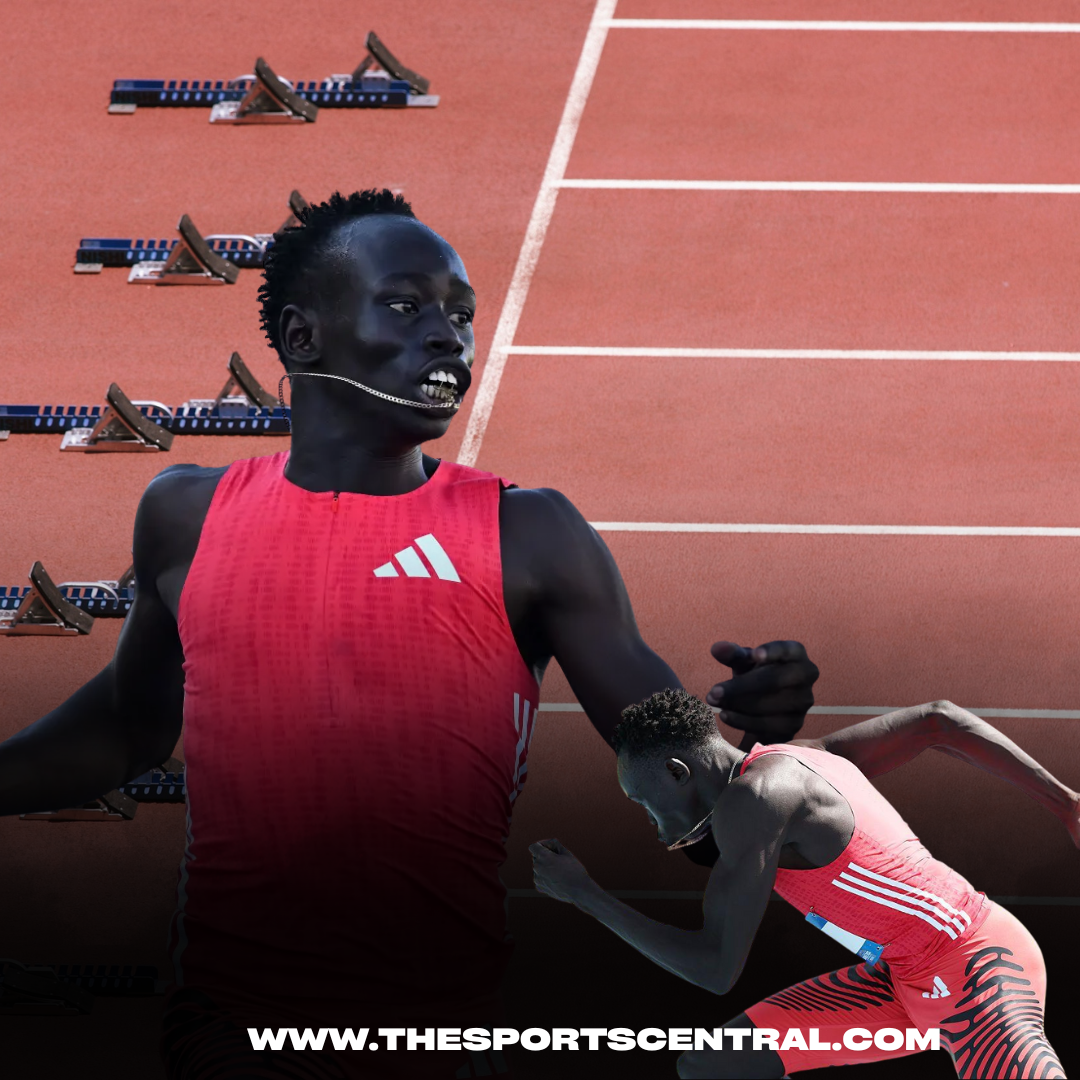The Athletics Federation of India (AFI) is set to undergo a significant transformation from the 2025 season, as it aims to enhance the performance of Indian athletes on the global stage. Speaking at the South Asian Junior Athletics Championship, held at the Jawaharlal Nehru Stadium, AFI President Adille Sumariwalla laid out a comprehensive plan to restructure the domestic competition framework and qualification criteria for international events. These changes come in response to the disappointing performance of Indian athletes at the 2024 Paris Olympic Games, where many failed to achieve their personal bests or advance to the finals of their respective events.
Key Elements of AFI’s Restructuring Plan
The restructuring plan is multi-faceted, focusing on various aspects such as the qualification system for international events, decentralization of training, increased opportunities for regional competitions, and a continued emphasis on anti-doping measures. Let’s delve into the key components of this strategic overhaul.
1. Revamping the Qualification System for International Events
A significant aspect of the AFI’s restructuring strategy is overhauling the qualification system for major international competitions, including the 2025 Asian Athletics Championships and World Athletics Championships. Adille Sumariwalla emphasized that the current qualification system does not adequately prepare athletes to peak at the right time. To address this, the AFI plans to implement a new qualification framework that will encourage athletes to maintain steady performances throughout the year, rather than focusing solely on a single event.
Under the proposed system, athletes will be required to participate in a certain number of domestic competitions to accumulate points. These points will play a crucial role in their selection for international events. By mandating regular participation, the AFI aims to create a more competitive environment that will ensure athletes are consistently at their best.
- Encouraging Consistent Performance: The new qualification criteria will favor athletes who demonstrate steady performance over time rather than relying on sporadic peak performances. “A steady performance will be a big advantage to get a nod from the AFI selection panel,” Sumariwalla explained. This approach is expected to build a more reliable and prepared pool of athletes for international competitions.
- Addressing the Decline in Performance: The AFI’s decision to revamp the qualification system is driven by concerns over the sudden decline in the performance of Indian athletes at the 2024 Paris Olympic Games. Sumariwalla noted that many athletes who had qualified for the Olympics were unable to sustain their performance levels, resulting in disappointing outcomes. The revamped system is expected to address this issue by fostering a culture of consistent excellence.
2. Emphasizing Regional Competitions
Another critical component of the restructuring plan is the increased emphasis on regional competitions. The AFI intends to decentralize its approach by organizing more domestic events across various regions, allowing athletes to compete closer to home. This change is aimed at making it easier for athletes to participate in competitions, reducing travel-related fatigue, and allowing them to stay within their comfort zones.
- Increasing the Number of Domestic Competitions: “There is a plan to have at least 30 domestic competitions from next season,” Sumariwalla revealed. This is a significant increase from the current number of events, which will provide athletes with more opportunities to compete and earn points for international qualification.
- Regional Competitions for Better Preparation: By focusing on regional competitions, the AFI hopes to provide athletes with a more diverse competitive experience. Competing in various environments and conditions is essential for preparing athletes to perform well on the global stage. Moreover, it will allow athletes to train and compete closer to their homes, fostering a sense of community and support.
3. Decentralizing Training: Moving Away from National Camps
In a move that signals a significant shift in India’s athletic training landscape, the AFI has decided to decentralize national training camps. Traditionally, these camps have served as centralized hubs where athletes prepare for international competitions. However, the new strategy will allow athletes to train at regional centers or locations of their choice.
- Flexibility in Training: “The athletes will train at regional centers and places of their choice,” Sumariwalla stated. This approach provides greater flexibility for athletes to train in environments that best suit their needs. It also allows them to work with personal coaches and utilize local resources, potentially leading to more tailored and effective training regimens.
- Expanding the Training Network: The AFI expects to have a minimum of 1,000 athletes training at various centers across the country. This decentralized approach aims to reach more athletes and foster a more inclusive environment where emerging talents from different regions can access quality training facilities.
4. Maintaining a Strong Stance Against Doping
The AFI remains committed to its “no needle policy” and will continue working closely with the National Anti Doping Agency (NADA) to combat doping in sports. Doping remains a significant issue in athletics worldwide, and the AFI is determined to uphold the integrity of the sport by ensuring that all athletes compete cleanly.
- Collaboration with NADA: “The AFI is coordinating with all the stakeholders to curb the use of prohibited substances by competitors to enhance their performance,” Sumariwalla affirmed. This collaboration aims to create a clean and fair competitive environment by promoting awareness, conducting regular tests, and implementing strict penalties for violations.
- Education and Prevention: In addition to testing, the AFI will focus on educating athletes, coaches, and support staff about the dangers of doping and the importance of maintaining a clean sport. This proactive approach aims to prevent doping incidents before they occur and reinforce the values of fair play and integrity.
The Road Ahead: Preparing for Major Competitions in 2025
With the 2025 Asian Athletics Championships and World Athletics Championships on the horizon, the AFI’s restructuring plan aims to position Indian athletes for success on the global stage. By revamping the qualification system, increasing regional competitions, decentralizing training, and maintaining a robust anti-doping stance, the AFI hopes to create a more competitive and prepared pool of athletes.
1. Preparing Athletes to Peak at the Right Time
A key objective of the restructuring plan is to ensure that Indian athletes are in peak condition when they compete in major international events. This involves careful planning and coordination between athletes, coaches, and the AFI to align training schedules, competition calendars, and recovery periods.
- Strategic Scheduling of Competitions: By organizing a greater number of domestic competitions throughout the year, the AFI aims to help athletes gradually build their form and confidence. This approach will also allow the AFI to monitor athletes’ progress more closely and identify areas for improvement.
- Focus on Personalized Training: The decentralization of training will enable athletes to follow customized training plans tailored to their individual needs. By working with personal coaches and utilizing local facilities, athletes can optimize their preparation and reduce the risk of burnout or injury.
2. Building a Competitive and Inclusive Athletics Ecosystem
The AFI’s plan to increase regional competitions and decentralize training reflects a broader vision of building a more inclusive and competitive athletics ecosystem in India. This approach is designed to reach a wider pool of talent, including athletes from remote or underserved regions, and provide them with opportunities to excel.
- Promoting Grassroots Development: By expanding the network of regional competitions and training centers, the AFI aims to promote grassroots development and create pathways for young athletes to progress through the ranks. This focus on grassroots development is critical for sustaining long-term success in athletics.
- Encouraging Regional Rivalries: Regional competitions can foster healthy rivalries and create a more dynamic competitive environment. These rivalries can motivate athletes to perform at their best and push each other to higher levels of performance.
3. Leveraging Technology and Data Analytics
To support its restructuring plan, the AFI is also exploring the use of technology and data analytics to enhance athlete performance and optimize training programs. This includes the use of wearable technology to monitor athletes’ biometrics, video analysis for technique improvement, and data-driven insights to guide training decisions.
- Performance Monitoring and Feedback: Wearable devices and other technological tools can provide real-time data on an athlete’s performance, allowing coaches to make immediate adjustments to training programs. This data-driven approach can help identify strengths and weaknesses, track progress, and prevent injuries.
- Enhancing Communication and Coordination: Technology can also facilitate better communication and coordination between the AFI, athletes, and coaches. For example, virtual platforms can be used for regular check-ins, video analysis sessions, and strategic planning discussions.
Conclusion: A New Era for Indian Athletics
The Athletics Federation of India’s ambitious restructuring plan marks the beginning of a new era for Indian athletics. By focusing on consistent performance, regional competitions, decentralized training, and a strong anti-doping stance, the AFI aims to elevate Indian athletes to new heights on the international stage. As the 2025 season approaches, the success of this restructuring plan will depend on the collaboration and commitment of all stakeholders, including athletes, coaches, administrators, and fans.
The road ahead is challenging, but with a clear vision and strategic approach, the AFI is poised to transform India’s athletics landscape and build a sustainable foundation for future success. The journey to becoming a global athletics powerhouse begins now, and the world will be watching as Indian athletes take their first steps toward glory in 2025 and beyond.










